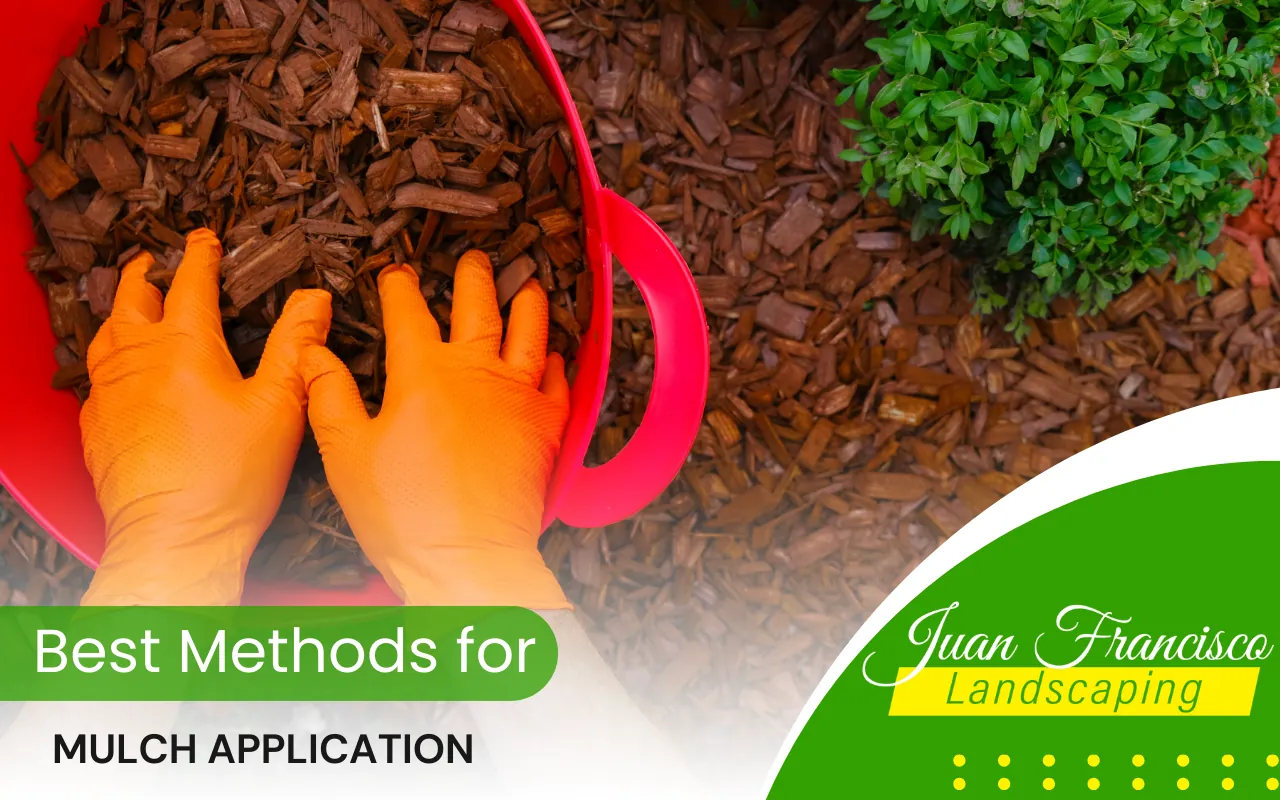
Mulch Application Methods for a Healthier Landscape
Mulching is one of the best ways to improve soil health and protect plants. However, using the right mulch application methods is essential. When applied correctly, mulch helps retain moisture, prevent weeds, and regulate soil temperature. Without proper techniques, it can cause drainage issues or attract pests. This guide explores the best ways to apply mulch, ensuring your landscape stays healthy and beautiful year-round.
Mulch Application Methods for a Thriving Landscape
Choosing the Right Type of Mulch
Not all mulch is the same. Selecting the right type ensures maximum benefits for your plants and soil.
- Organic Mulch – Includes bark, straw, and wood chips. It decomposes over time, improving soil quality.
- Inorganic Mulch – Includes rubber, gravel, and plastic. It lasts longer but does not enrich the soil.
Each type has its benefits. Organic mulch improves soil fertility, while inorganic mulch offers long-lasting weed control.
Best Mulch Application Techniques
Applying mulch correctly helps plants thrive. Follow these effective methods to get the best results.
- Layering Properly – Spread 2-4 inches of mulch to keep moisture in and weeds out.
- Mulching Around Trees and Plants – Keep mulch a few inches away from stems to prevent rot.
- Using the Right Tools – Rakes and mulch blowers help distribute mulch evenly for better coverage.
With the right techniques, your mulch lasts longer and provides better protection for plants.
Seasonal Mulching Tips
Each season affects mulch differently. Adjusting mulch application based on the weather keeps your garden in top condition.
- Spring Mulching – Refresh mulch to lock in moisture before the heat arrives.
- Summer Mulching – Use light-colored mulch to reflect heat and prevent soil drying.
- Fall Mulching – Add mulch around roots to insulate plants before winter.
Proper seasonal mulching ensures plants stay healthy all year.
Common Mulching Mistakes to Avoid
Mulch is beneficial, but improper application can harm plants. Avoid these common mistakes to maintain a thriving landscape.
- Over-Mulching – Too much mulch suffocates roots and blocks air circulation.
- Mulch Volcanoes – Piling mulch against tree trunks causes rot and attracts pests.
- Ignoring Mulch Breakdown – Organic mulch decomposes and needs regular refreshing.
Using the right amount and applying mulch correctly prevents plant stress.
Benefits of Proper Mulch Application
Applying mulch the right way provides long-term benefits for plants, soil, and overall landscape health.
- Reduces Water Loss – Mulch keeps moisture in the soil, reducing the need for frequent watering.
- Prevents Weeds – A thick mulch layer blocks sunlight, stopping weeds from growing.
- Improves Soil Health – Organic mulch adds nutrients as it decomposes, enriching the soil.
With proper mulch application, your garden will thrive with less maintenance.
FAQs About Mulch Application Methods
How often should mulch be applied?
Most landscapes benefit from mulch refreshment once or twice a year.
What is the best mulch for flower beds?
Organic mulches like bark or straw help improve soil health while maintaining moisture.
Can mulch attract pests?
Some mulch, like wood chips, may attract insects if placed too close to plant stems.
Is colored mulch safe for plants?
Dyed mulch is generally safe, but natural mulch provides better long-term soil benefits.
Enhance Your Landscape with Expert Mulch Application
Using the right mulch application methods ensures a healthy, low-maintenance landscape. However, improper techniques can cause plant stress and poor soil quality. If you need seasonal mulching, weed control, or soil improvement, professional mulching ensures long-lasting results. Contact us today for a free estimate from an insured company with over 13 years of experience. Let’s help you create a thriving landscape.
